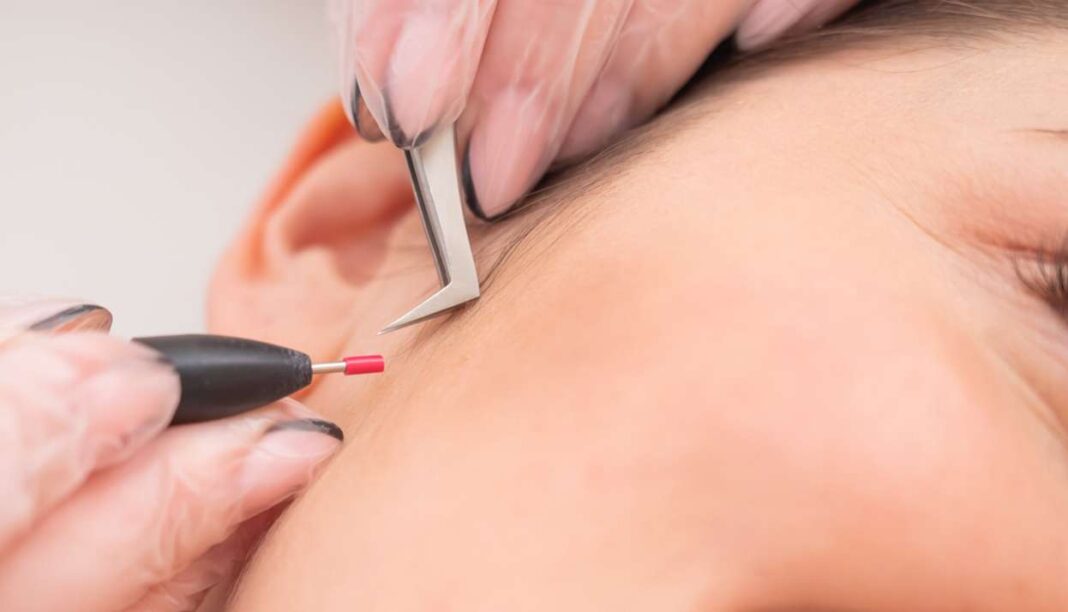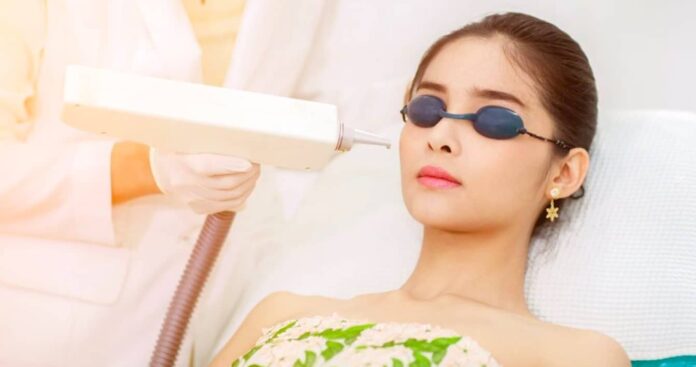Electrolysis hair treatment, when performed correctly, is widely accepted as an effective and safe method for permanent hair removal. However, this procedure may pose some dangers, one of which has caused a lot of concern: one may get scars. People thinking about using electrolysis as a long-term hair removal method should first know these dangers and how to avoid them.
The present article will explore, as a cause of concern for women undergoing electrolysis, scarring as a risk factor, the associated risk variables, and ways of controlling these risks to ensure safe and effective outcomes.
Table of Contents:
- Part 1: Scarning Risk Factors
- Part 2: Can Electrolysis Scarring be Permanent?
- Part 3: How may one prevent scarring during electrolysis?
- Part 4: Special Thoughts Regarding Various Skin Types
-
Part 5: In case of scarring, what measures should be taken?
Scarning Risk Factors
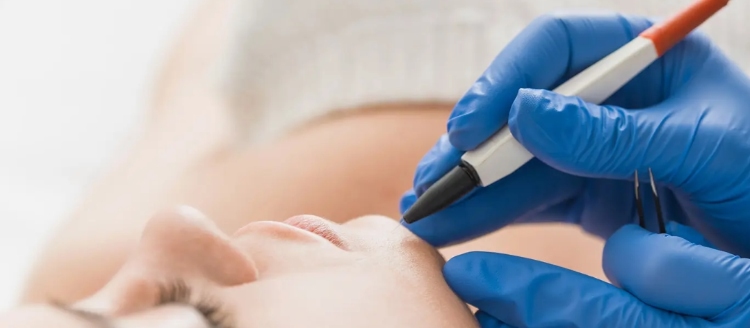 While electrolysis can commonly be performed without any adverse effects, there are certain factors that can cause scars and in order to avoid them, we should keep in mind about them. Some of them are:
While electrolysis can commonly be performed without any adverse effects, there are certain factors that can cause scars and in order to avoid them, we should keep in mind about them. Some of them are:
1. Skin characteristics and personal healing traits.
Individual healing of the skin is different; that is, some people are more prone to scarring than others. This is because genetics together with skin characteristics and the overall condition of the skin play a huge role in how one responds to treatment. For example, in darker skin types, there can be excessive scarring and/or uneven skin tone after treatment due to increased production of melanin. Likewise, those whose skin is prone to hypersensitivity may also have more exposure which leads to inflammation, thus, increasing the chances of developing scars.
2. Incorrect settings or methods
Unskilled or inexperienced practitioners may perform unnecessary electrolysis that destroys excessive skin layers or surrounding tissues, which, in some cases, may result in permanent scar formation. Important aspects contributing to this include using the wrong techniques or devices for the specific hair and skin types or the wrong parameter settings, for instance, excessive electric current or an unsuitable probe electrode. A qualified professional electrologist understands what values to alter for the skin and hair types during treatment to ensure safety and effectiveness.
3. Extravagant Procedures
Excessive treatment levels are another primary factor in the increase of scarring. If too many hair follicles are treated in one sitting or energy levels are too excessive, and the entire treatment regions are not given enough healing time during and between sessions. This may result in unnecessary trauma to the skin, which in turn may lead to scarring.
Can Electrolysis Scarring be Permanent?
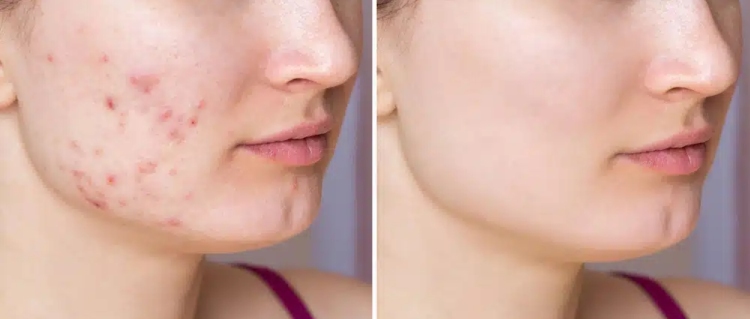 Unlike permanent scars, treatment sequelae like redness or hyperpigmentation after treatment are mostly of a temporary nature. In most cases, hyperpigmentation is self-limited: it resolves with time; scarring does not resolve unless some treatment is provided.
Unlike permanent scars, treatment sequelae like redness or hyperpigmentation after treatment are mostly of a temporary nature. In most cases, hyperpigmentation is self-limited: it resolves with time; scarring does not resolve unless some treatment is provided.
Temporary vs. Permanent Scarring
It is essential to make a difference between everlasting scars and the normal and temporary redness or irritation that occurs as a result of treatment. Redness, swelling, or slight pain may be experienced post-treatment due to electrolysis, but this usually clears up within a few hours to a few days. This is part of the normal process of healing. However, if the redness persists or the skin develops raised areas, fluid-filled sacs, or discoloration, the scarring might be suggested and it can be permanent.
Healing History
In a global sense after an electrolysis session the skin takes a number of days upto several weeks to heal. For the individuals who are susceptible to scarring the process of healing may take even longer and may not result in permanent scarring. Though very uncommon, very rarely do people develop permanent scars as a result of poor patient care during the timeframe of tissue repair.
How may one prevent scarring during electrolysis?
Even though there are some risks associated with electrolysis, most of them can be avoided by actively engaging with your treatment plan. Knowing about cthe auses behind the scar formation, resulting from electrolysis, may not solve the problem. But, as we all know, prevention is better than the cure. Therefore, in order to cure and avoid scar formation, prevention from the causing factors is necessary.
1. Professional Electrologist
Selecting the right electrologist is the key step in preventing scarring during the procedure. A certified and well-trained professional will ensure that the procedure is done as it should be. To make sure that you are getting the best treatment from the specialist:
- For example, check if your electrologist is accredited and has other certificates from the American Electrology Association (AEA).
- An experienced practitioner would be in a position to assess your skin and hair and be able to adjust her technique so as to minimize scar formation.
- Do not go for practitioners who have ridiculously cheap prices, have no complete prior consultation, or have difficulties answering your inquiries in a straightforward manner.
2. Corrective Skin Care Before and After Treatment
Skincare Pre-treatment:
Contingent measures in physical treatment procedures will prepare the skin for electrolysis thereby preventing excessive irritation. Four (4) days before your session, please avoid exposure to the sun, as well as the use of aggressive skin care products like exfoliants or retinoids. Such products can increase the sensitivity of the skin and consequently, the risk of injury when undergoing treatment.
Skincare Post- Treatment:
It is essential to adhere to a consistent skincare routine after undergoing electrolysis. Affected regions will require the use of gentle moisturisers to prevent dryness but do not touch or pick the treated regions. Seek and apply a sunscreen that has a wide range (broad spectrum) of protection to prevent the deterioration of the skin due to UV rays which for instance cause hyperpigmentation and do not expose the skin to sunlight directly for at least a day to two following the treatment. Also important is to refrain from wearing tight clothing and constantly applying heavy makeup on the treated areas.
3. Avoid Too Much of Treatment.
Over-treatment plays a huge role in the development of scars. So treatment sessions should be planned at such intervals that there is sufficient time for the skin to heal. Typically most people avoid treatments for a period of one to two weeks. To ensure optimal results, the electrologist will assess the state of the tissues and modify the treatment plan if necessary.
4. Techniques and Sites of Treatment
Right practices minimize the chances of scarring. The excess charges can potentially burn the skin as they are applied for too long. Using appropriate current levels, suitable electrode sizes, and application techniques appropriate for different skin and hair types, a certified electrologist will ensure that only the hair socket is affected thus preventing injury to the adjacent tissues.
Special Thoughts Regarding Various Skin Types
There may be variations in the care given or the methods used during electrolysis based on the skin types:
Sensitive Skin
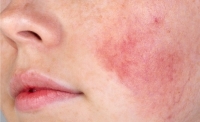 Individuals with sensitive skin should take special measures as the procedure may induce a more drastic reaction on their skin. It is advisable to seek the services of an electrologist who has experience working with sensitive skin and explain any problems or reactions that you may have had in the past.
Individuals with sensitive skin should take special measures as the procedure may induce a more drastic reaction on their skin. It is advisable to seek the services of an electrologist who has experience working with sensitive skin and explain any problems or reactions that you may have had in the past.
Darker Skin tones
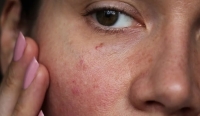 Darker skin tones run more risk for hyperpigmentation following electrolysis than lighter skin tones. This phenomenon occurs in response to the treatment in which the body produces more melanin. In order to minimize this risk, electrologists must alter the energy levels and techniques employed; patients with darker skin should ensure they receive skin-specific aftercare treatments.
Darker skin tones run more risk for hyperpigmentation following electrolysis than lighter skin tones. This phenomenon occurs in response to the treatment in which the body produces more melanin. In order to minimize this risk, electrologists must alter the energy levels and techniques employed; patients with darker skin should ensure they receive skin-specific aftercare treatments.
Acne-prone skin
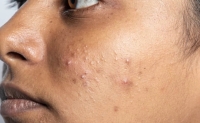 Acne-prone skin people should be cautious because electrolysis can worsen the affected areas. Consult your doctor regarding the safest course of action if receiving electrolysis treatment in areas that are susceptible to acne such as the face.
Acne-prone skin people should be cautious because electrolysis can worsen the affected areas. Consult your doctor regarding the safest course of action if receiving electrolysis treatment in areas that are susceptible to acne such as the face.
In case of scarring, what measures should be taken?
If there is scarring or any irritation after the electrolysis, you should primero consult your electrologist. They are in the best position to assess the situation and even recommend the right treatment, which may include laser treatment for dark scars and creams for raised scars among other therapies. In severe cases, referring the patient to a specialist such as a dermatologist may become necessary.
Other Solutions to Prevention of Scarring
Laser hair removal may be the less risky option for patients who tend to scar more easily. Laser hair removal such as Ulike Air 10, works by destroying the pigment in the hair follicle and is generally considered less risky than electrolysis which causes more diffuse irritation for people with pigmented skin. The best results are usually achieved through a combination of laser therapy and electrolysis.

Conclusion
That said, electrolysis scarring is very rare. All the care and skills necessary should be employed during the procedure. The risk of post-electrolysis scars can be minimized significantly by having a qualified electrologist assess your skin, preparing it, and complying with the after-treatment care instructions. In case you experience scarring or other side effects after the procedure, there is an effective treatment that works to fix the problem. If done with care and correctness, electrolysis is still one of the most effective methods of permanently removing hair. In order to obtain the best outcome.
FAQs
Is there a possibility of any discoloration appearing after electrolysis?
In many cases, including those with hyperpigmented skin, patients experience temporary discoloration including erythema or hyperpigmentation following electrolysis. Usually, this resolves in due course; however, there are some instances where the discoloration remains.
Following the electrolysis treatment, the healing period of the skin is how long?
Average healing time can vary from a few days to 2 weeks depending on the skin of the individual and how deep the treatment has been done. Correct skin care practices may help speed the restoration process.
Is electrolysis suitable for everyone irrespective of their skin type?
In general yes, but special care may be necessary for sensitive or darker skin types. Choosing the right treatment for your skin is a matter of professional advice.

 By Mariela
By Mariela
